The World Bank will publish the nine volumes of Disease Control Priorities, 3rd Edition (DCP3), in 2015-16. DCP3 will summarize and synthesize evidence of the effectiveness of global health interventions and provide comparative economic evaluation of policies to implement those interventions. The first volume, Essential Surgery, identifies 44 surgical procedures as essential on the basis that they address substantial needs, they are cost effective, and they are feasible to implement.
HIPRC Core Member Charles Mock, MD, PhD, MPH, FACS (Professor of Surgery, Epidemiology, and Global Health) was one of the editors for the Essential Surgery volume. He helped edit chapters on Surgery & Trauma Care (Ch. 3), Organization of Essential Services & the Role of First-Level Hospitals (Ch. 12), and Prehospital & Emergency Care (Ch. 14). There was also an article published in the Lancet.
Project Title: Crash Injury Research & Engineering Network (CIREN)
Principal Investigators:
Eileen Bulger, MD, FACS (Professor of Surgery)
Robert Kaufman, BS (Senior Research Scientist Engineer for Surgery)
Jarrod LaFountain (Research Coordinator for Surgery)
Susan Mastroianni, RN (Research Nurse for Surgery)
Megan Nelson, BA (Research Consultant for Surgery)
Funding Organization: National Highway Traffic Safety Administration
Funding Period: May 2015 – May 2016
Project Title: Evaluation of Smart Anesthesia Manager™ (SAM) Integrated with Multiple Anesthesia Information Systems to Deliver Real-time Decision Support and Guidance Funding Source
Principal Investigator: Bala Nair, PhD (Research Associate Professor of Anesthesiology)
Co-Investigator: Monica Vavilala, MD (Professor of Anesthesiology and Pediatrics)
Funding Organization: Coulter Foundation
Amount: $130,234
Funding Period: June 2015 – May 2016
In the past week, HIPRC Trainee Alex Quistberg, PhD,MPH (T-32 Postdoctoral Fellow in Pediatrics) and HIPRC Staff Member Vivian Lyons, BS, MPHc (Research Assistant for Anesthesiology) went to Ingraham High School and talked to the AP Statistics classes about how statistics work in the “real world” and that statistics is not just a concept from the textbook that they need to learn in order to pass a test.